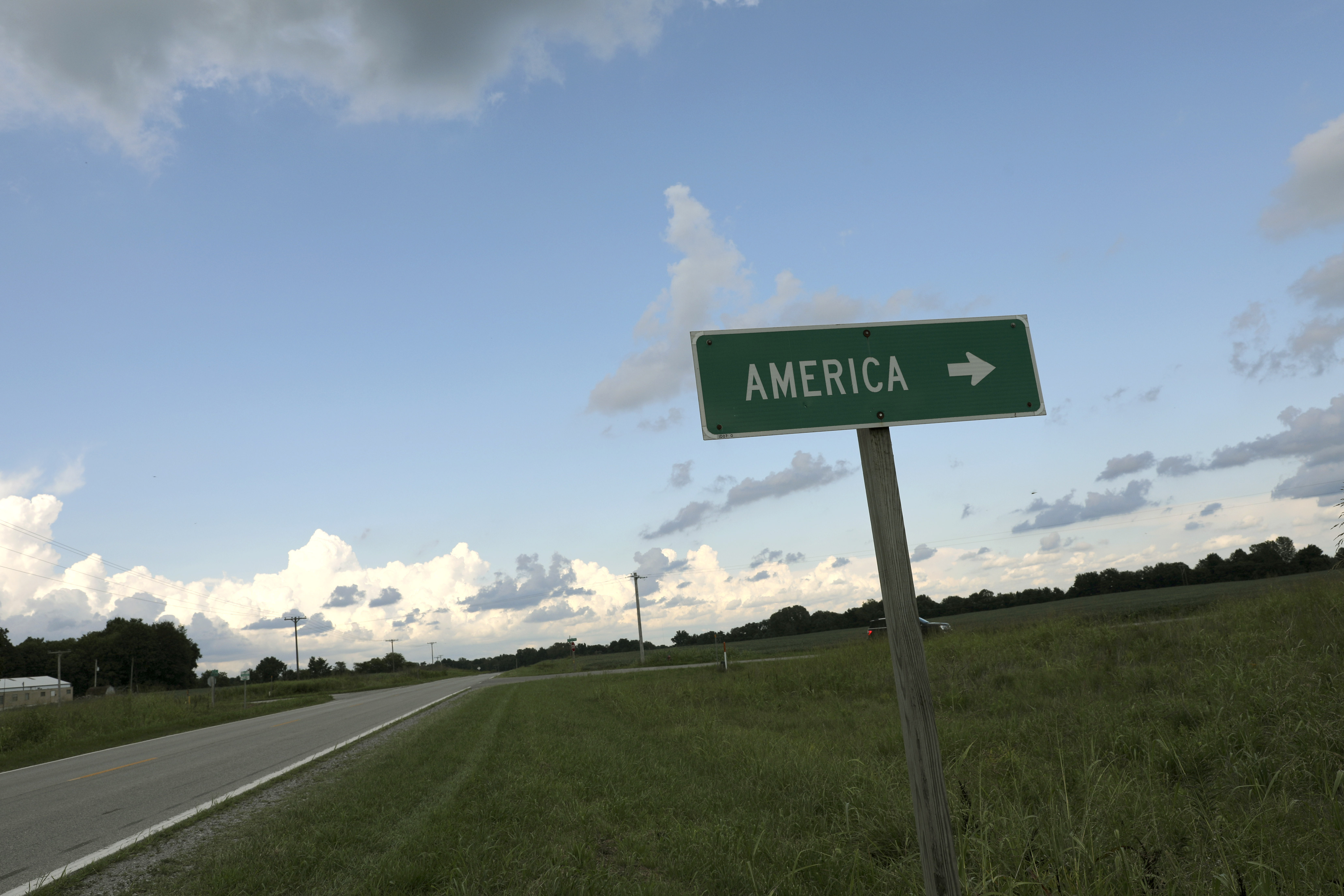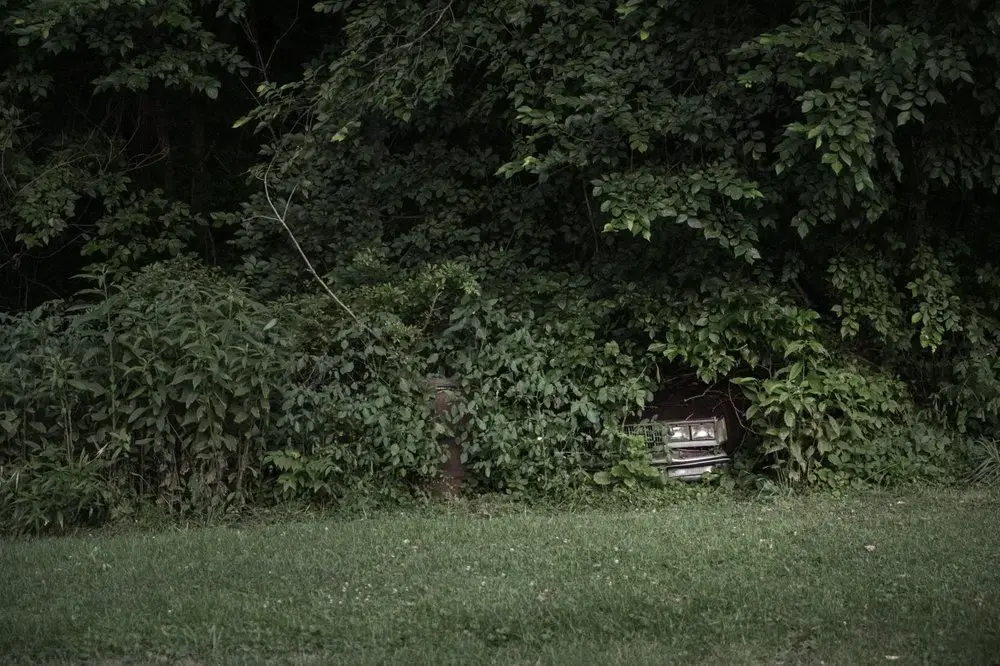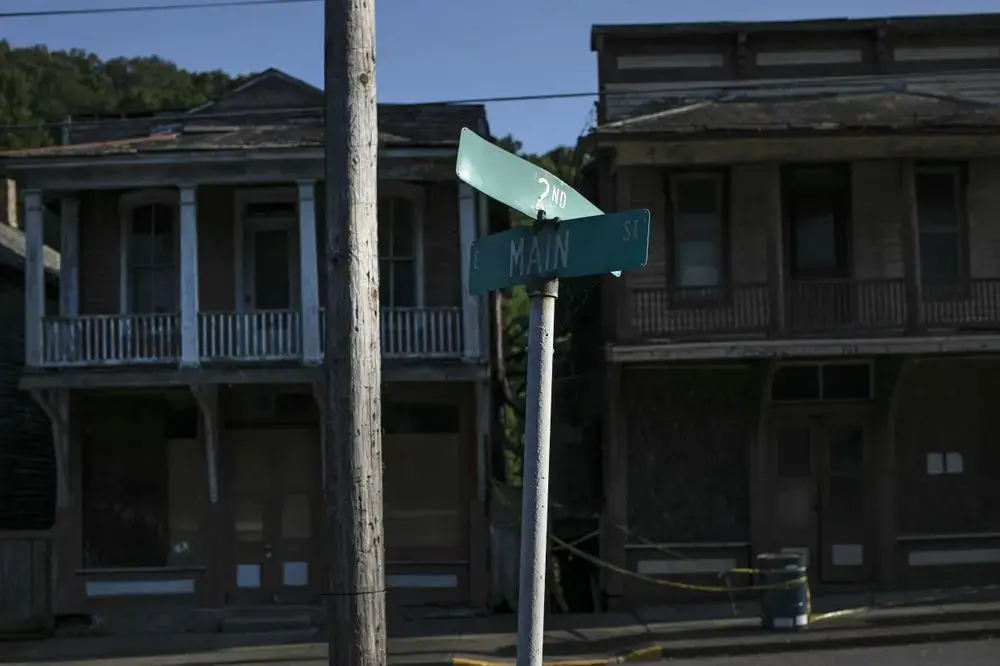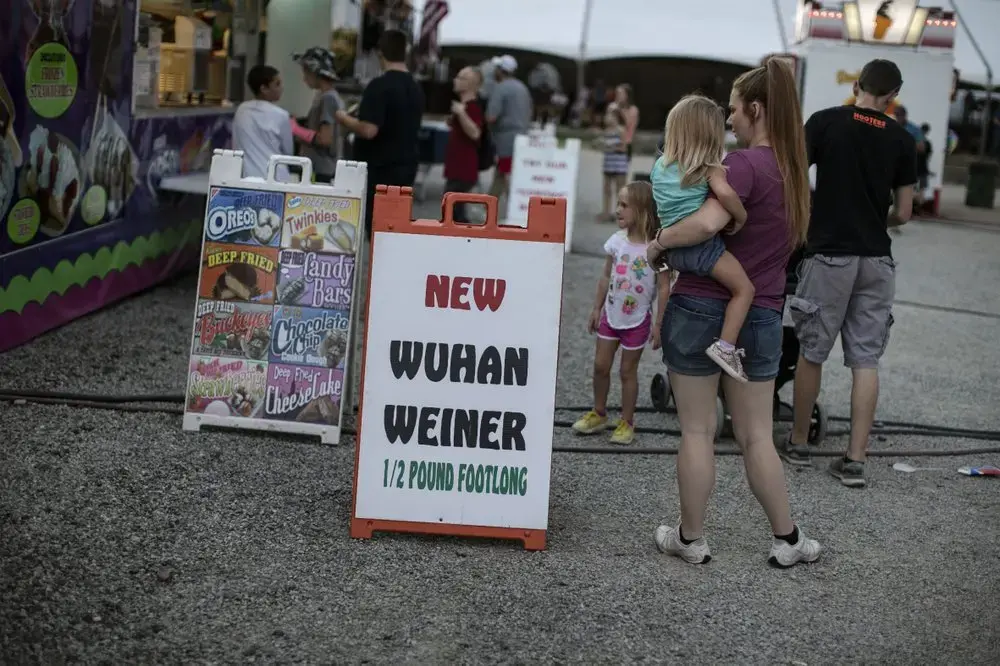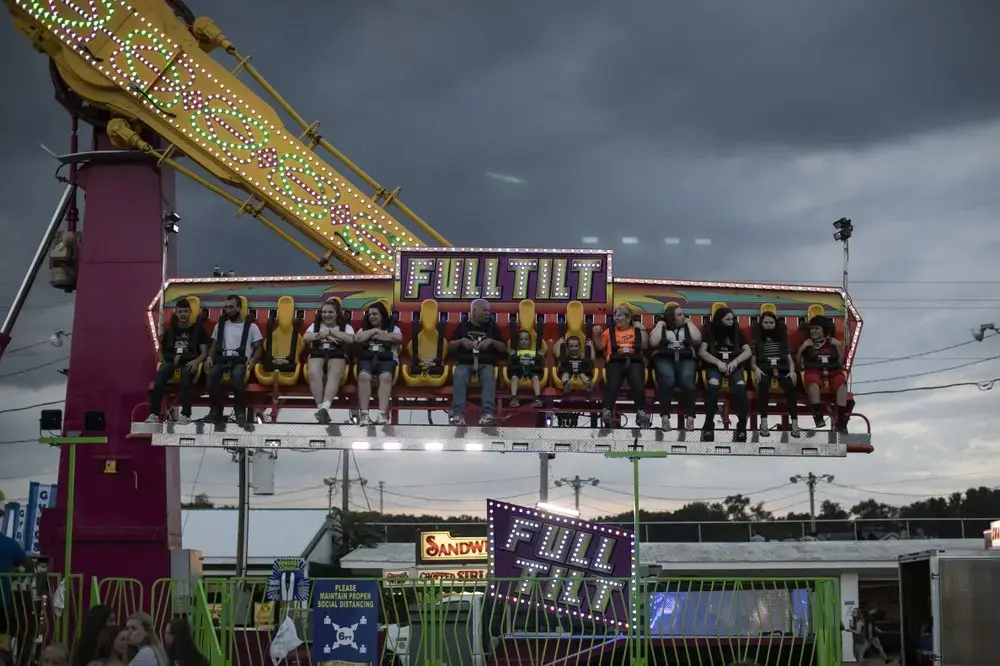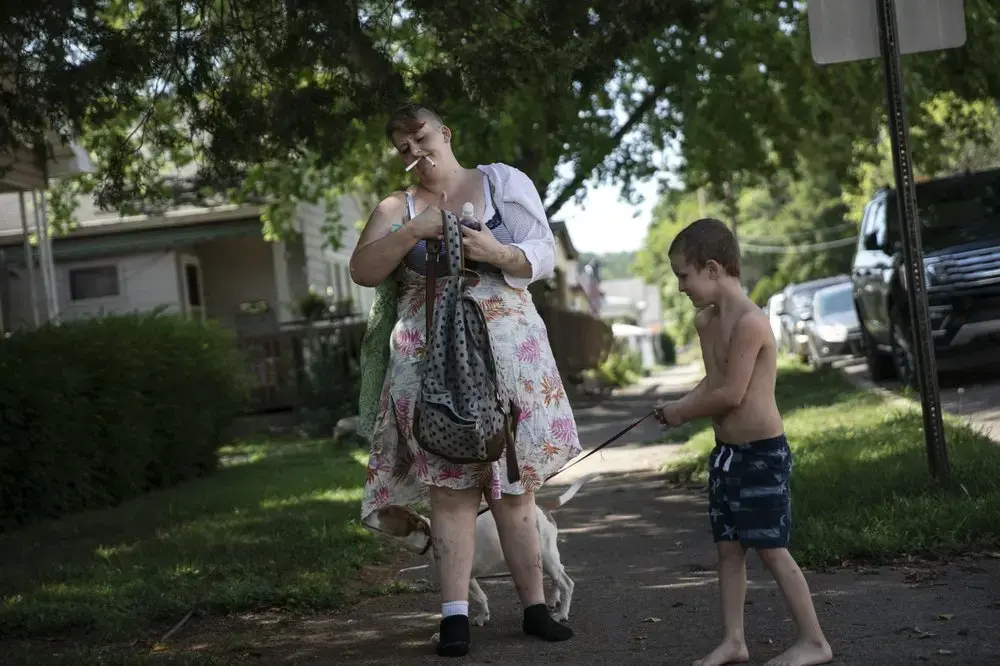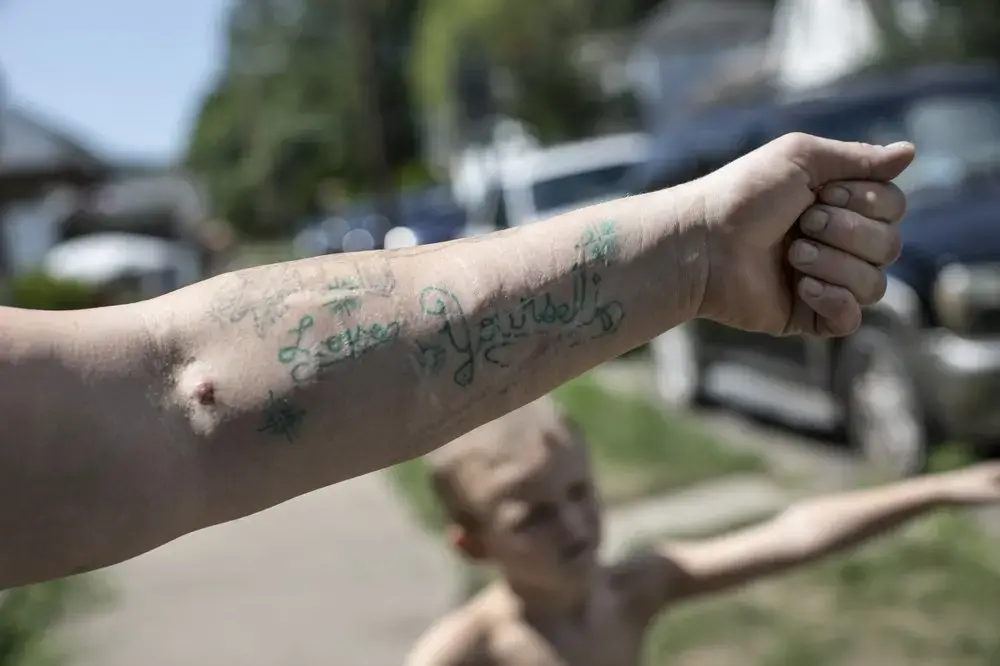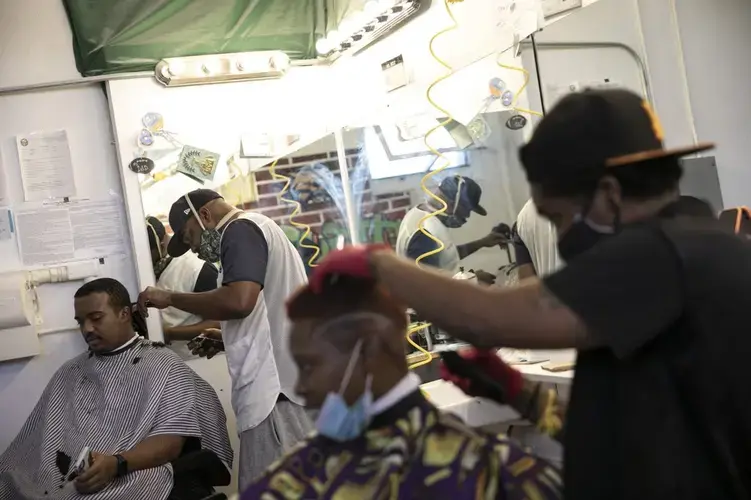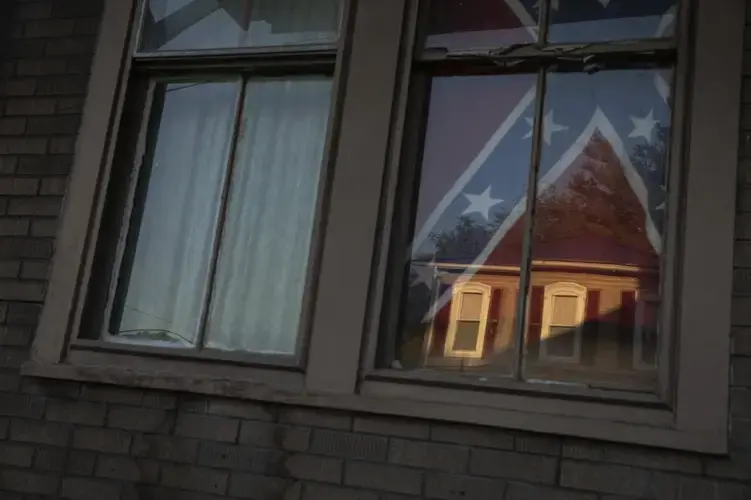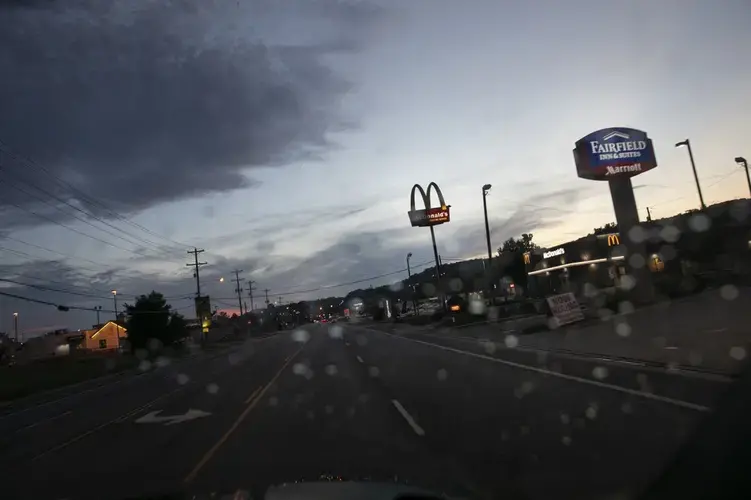BUCHTEL, Ohio (AP) — The water, so cold that it nearly hurts, spills relentlessly into a concrete trough from three pipes driven into a hillside near the edge of town.
People have been coming to the trough for at least a century, since horses were watered here and coal miners stopped by to wash off the grime. People still come — because they think the water is healthier, or makes better coffee, or because their utilities were turned off when they couldn’t pay the bills. Or maybe just because it’s what they’ve always done.
For years, Tarah Nogrady has filled plastic jugs here and lugged them back to a town so small it rarely appears on maps. As she collects water for her four Pekinese dogs waiting in the car, she doesn’t wear a mask, like so many around here. Nogrady doubts that the coronavirus is a real threat — it’s “maybe a flu-type deal,” she says.
It’s a common view in the little towns that speckle the Appalachian foothills of southeast Ohio, where the pandemic has barely been felt. Coronavirus deaths and protests for racial justice — events that have defined 2020 nationwide — are mostly just images on TV from a distant America.
For many here, it’s an increasingly foreign America that they explain with suspicion, anger and occasionally conspiracy theories. The result: At a time when the country is bitterly torn and crises are piling up faster than ever, the feeling of isolation in this corner of Ohio is more profound than ever.
________
It’s easy to dismiss COVID-19 in these sparsely populated rural counties, some of which can still count their deaths from the virus on one hand. Local politicians hint that even the small death tolls might be inflated.
Many of Nogrady’s neighbors think the pandemic is being used by Democrats to weaken President Donald Trump ahead of the election. Some share darker theories: Face mask rules are paving the way for population control, they say, and a vaccine could be used as a tool of government control.
“I think they want to take our freedoms,” Nogrady says, a baseball hat turned backward on her head. “I believe the government wants to get us all microchipped.”
These fears reflect a desolate worldview: People who a generation ago believed in the president’s promises to change their region forever now have a deep distrust of Washington — and a defiant sense that they are on their own.
___
We came to this part of Ohio because it’s where President Lyndon Johnson decades ago first mentioned the Great Society, perhaps the most audacious federal push to remake America since World War II.
It seemed a good place to start a road trip across the country, as the most divisive election in decades is looming.
We wanted to look at the issues that exploded onto the national consciousness this year — COVID-19, economic meltdown, race-related protests — through the eyes of different regions, myriad Americans. Three of us from The Associated Press planned to go to Ohio and Illinois, to Kentucky and Georgia and Mississippi, and then out West, looking for windows into a country that can seem so contradictory, so confusing.
When Johnson gave his speech in 1964 at Ohio University, the hills of Appalachian Ohio were some of the most fiercely Democratic places in America.
“We must abolish human poverty,” Johnson proclaimed, foreshadowing a torrent of federal programs that would eventually include Medicare, Head Start preschool, environmental laws and a push for equal justice.
These hills were then a patchwork of closed coal mines, undernourished children and houses without indoor plumbing. But applause surged through the thousands of people in the audience. They believed.
Not anymore.
Now, except for the county of Athens, where Ohio University nurtures a more liberal electorate, the region is fiercely Republican. And the idea that Washington can solve America’s problems is blasphemy.
“It’s impossible!” said Phil Stevens, a deeply conservative Republican who speaks in exclamation points, then apologizes for doing so. “Ridiculous!”
Stevens, 56, runs a small auto repair business and used car lot in a narrow valley where his family has lived for generations. He talks about the anger and suspicion that thread through the hills, about a deep distrust of the government, about friends stocking up on weapons and ammunition. A former Democrat, he now derides the party as a rabble of left-wing extremists who won’t even stand up for police officers during riots.
“I fear our country’s not far from collapse,” he said. “We’ve taken it and taken it. And there’s going to be a lot of people that just ain’t taking it no more.”
Like so many other Americans, Stevens is trying to make sense of the chaos of 2020.
“You’re just sitting here minding your own business, and things start crumbling all around you,” he said, shaking his head. Only God knows, he said, when America will return to normal: “And I sometimes think we’ve got Him scratching His head because this is a bunch of craziness.”
The political ground of southeast Ohio began to shift decades ago, and the region was largely Republican by the 2012 elections. But in 2016, counties where Democrats once had sizable minorities swung hard to the right — part of a broader national wave of working-class regions that helped Trump take the White House.
Trump was unlike any candidate they’d seen before. He didn’t offer the Great Society, or a War on Poverty. Instead, he said he was as sick as they were of Washington and the political elite. He was the perfect candidate for a region that not only expects little from the government, but also mistrusts it deeply.
In many counties Trump took more than twice as many votes as Hillary Clinton.
“I think he’s one of the best presidents we’ve had,” said Nogrady, 38, who makes a living buying and selling goods online and takes care of her elderly mother. “He’s got a mouth on him. I mean, he tells it how it is.”
______
Rural Appalachians have long bristled at the way outsiders have portrayed them, replacing their complicated reality with stereotypes about poor and ignorant mountain people. Chris Chmiel, a small farmer and Democratic commissioner for Athens County, believes deeply in the benefits of Appalachian life — the fierce tenacity of its people, the beauty of the hills, the ties to hometowns and families in ways that are increasingly rare in America.
“We have a lot of things that other people don’t have,” Chmiel said on a recent Saturday morning at a weekly farmers market. “That is priceless in my opinion.”
Yet it’s impossible to paint a picture of this swath of Appalachia without describing its deep and pervasive poverty. While COVID-19 itself hasn’t hit hard yet, its economic impact is further squeezing a region that can barely afford it.
Unemployment skyrocketed to highs of nearly 18 percent amid early virus shutdowns, doubling in some counties from March to April. While those rates have come down since, nearly every county in the region is still worse off than at the start of the year. Six months into the pandemic, businesses from used car lots to barbershops to organic farmers are battered.
“We’ll tough it out,” said Stevens, who has seen business plunge by 30 percent or more. “We don’t make a lot of money here. But we learned to live on just a little.”
Appalachia is certainly far better off than when Johnson gave his speech.
Even if it didn’t completely win the War on Poverty, the Great Society brought everything from near-universal electricity and indoor plumbing to more preschools and greatly expanded medical coverage. There’s a sizable middle class now in the hills of southeast Ohio, even though many people have to commute a couple of hours a day to Columbus or other cities for decent-paying work. They are teachers and factory workers, nurses and janitors, who have carefully tended homes and yards and who save to send their children to college.
But after a history of outside exploitation by coal barons and later pharmaceutical companies selling opioids, Appalachian Ohio also still has some of the state’s poorest counties, with child poverty rates higher than 30 percent. I’d seen poverty in much poorer countries, and had reported on families from rural Pennsylvania to Texas who would have gone hungry without local food pantries. Even there, the child poverty rates were less than half what they are here.
The poverty is visible in the houses near collapse, the trailer homes fixed with duct tape, the buildings consumed by vines. These not-quite ghost towns were once thriving coal communities, now slowly dying decade after decade, leaving behind streams that still run a putrid orange from the drainage of old mines.
We saw empty schools and boarded-up churches. Main Street in Shawnee, an old coal town that once boasted an opera house, a vaudeville theater, dozens of stores and plenty of taverns, is now one abandoned building after another.
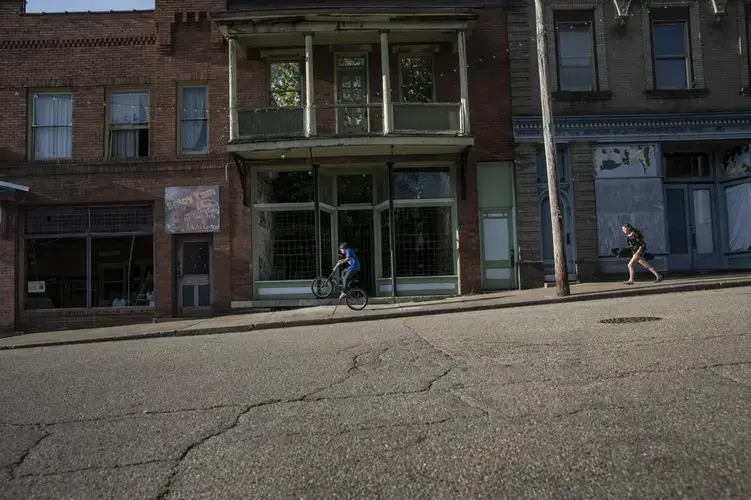
In the riverside town of Corning, many homes looked empty, with paint that had been peeling for years, maybe decades, warped wooden porches and roofs with shingles flaking off. Yet when nightfall came, lamps were switched on inside those homes, and dim light began leaking through so many timeworn curtains.
People talk endlessly about the lack of opportunity.
“Mostly gas stations,” said Nogrady. “That’s all there is around here.”
Often, the most crowded parking lots are at the ubiquitous Dollar General and Family Dollar stores, signposts of financial hardship as common here as Starbucks in well-heeled suburbs. Shoppers walk aisles spilling over with $5 ceramic pumpkins and 10-cent freezer pops.
“Low prices on milk and eggs!” promises a plastic banner in front of the Nelsonville Dollar General.
“It sucks being poor,” said Tasha Lamm, a 30-year-old raising two sons on public assistance in the town of Bidwell. She’s a skinny, talkative high-school dropout who is sure the government is using the pandemic to take more power, and who has been promising herself for years that she’d get her equivalency degree. Her work history jumps from gas stations to fast food outlets to one of those Dollar Generals.
“I’ve had this problem with jobs — like authority,” said Lamm, who has been largely on her own since 14 and saw her father, brother and the father of her children succumb to heroin addiction.
She shares a small subsidized condominium with the boys and her girlfriend. They were homeless for most of last year, living in a car, before a local social service agency found them the home they’ve crowded with decorations, from a poster of a stained-glass Jesus rescued from the garbage to a Winnie the Pooh snow globe.
The refrigerator holds little more than a package of eggs, a half-eaten apple and dozens of single-serve TruMoo chocolate milk containers donated by a local school. “Belief thy lord” is spelled out in colored stickers on the wall above the dining table.
In her diary, Lamm dreams of taking her family and leaving Ohio, the scene of so much personal pain: “I’m ready to leave this place and everyone in it, because I know there’s something better waiting for me.”
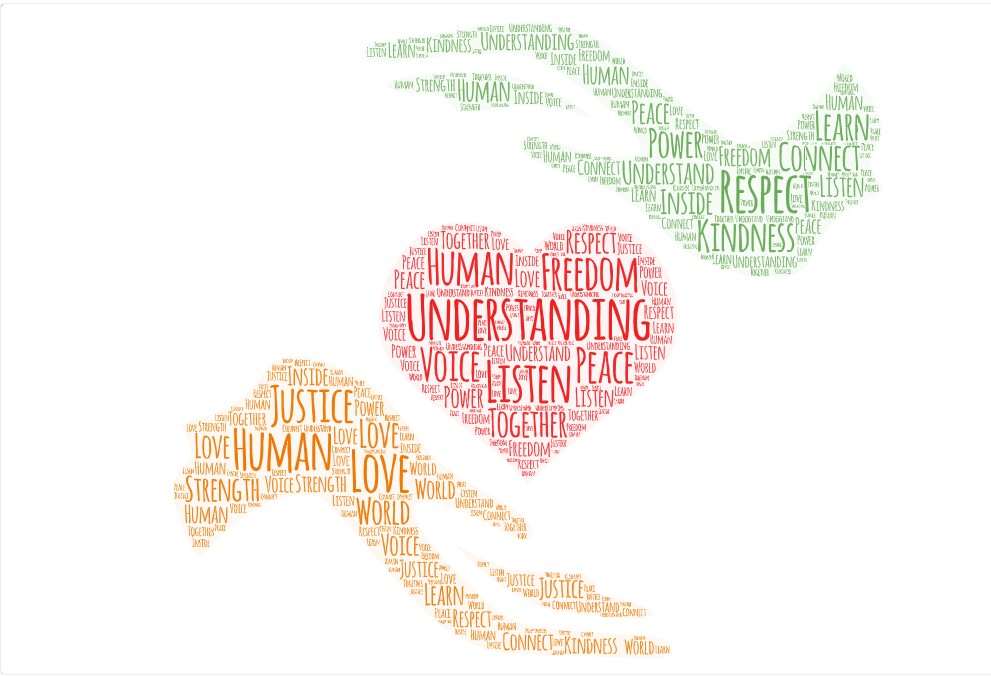
Education Resource
Exploring Personal Connections to Racial Justice through Social Emotional Learning
This unit was created by Tracy Crowley, an Information and Media Literacy Specialist at Jack London...




